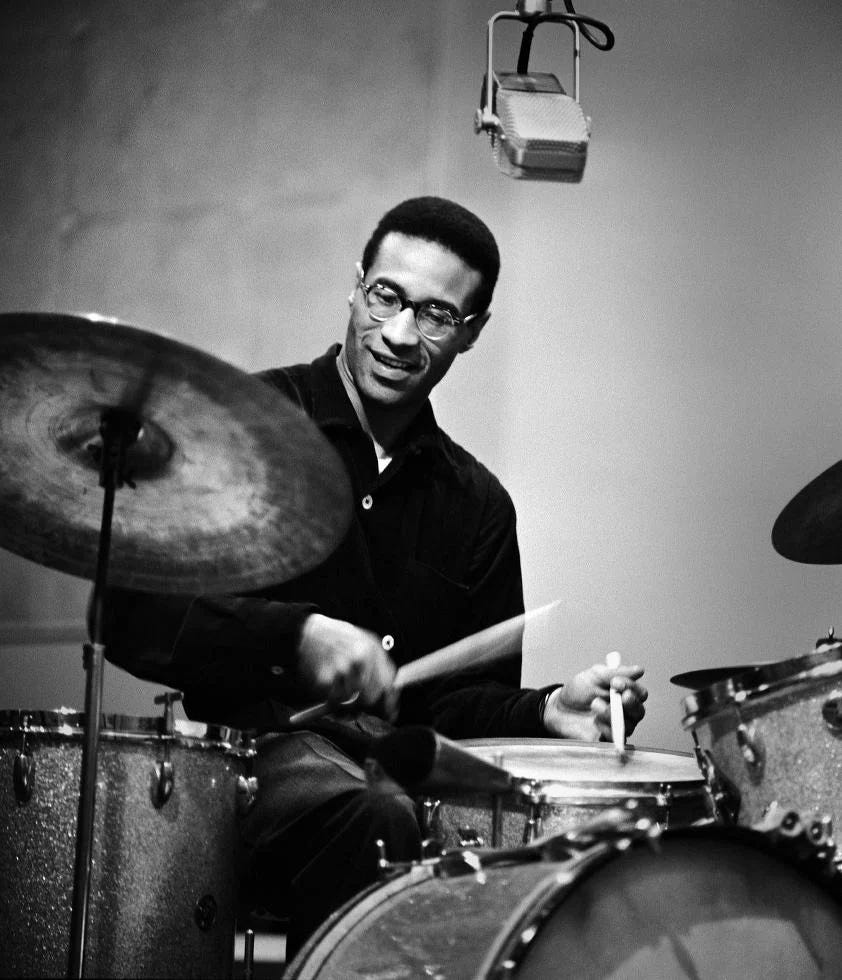Five Bullets 10.20.23
Max Roach, Brain Cell Mapping, Whistling Jars & more
Good morning and happy Friday everyone!
Welcome back to Circles in Space.
Today’s Bullets:
Movies: Martin Scorcese and Timothée Chalamet sat down for a chat ahead of the release of Scorcese’s latest film Killers of the Flower Moon (based on David Grann’s book). The pair talk film, art, human nature and growing up in Manhattan. I could listen to Scorcese’s stories about his classic films including Goodfellas, Taxi Driver, and Raging Bull for hours.
Music: The Drum Also Waltzes. This week I’ve been diving into the music of jazz drummer Max Roach. Roach, born in 1924 in North Carolina, moved with his family to Brooklyn’s Bedford-Stuyvesant neighborhood at age 4. His musical career began at age 18 when he subbed for Sonny Greer with the Duke Ellington Orchestra. Roach, one of the most influential drummers in the bebop & hard bob styles, played on countless records with Dizzy Gillespie, Charlie Parker, Thelonius Monk, Miles Davis, Coleman Hawkins, and Clifford Brown, among many others. Roach and Charles Mingus started one of the first artist-led record labels, and Roach was active in the Civil Rights Movement. Drummer Stan Levey described Roach’s playing best:
“I came to realize that, because of him, drumming no longer was just time, it was music.”
NYC: How Six Italian Brothers Shaped New York.The Piccirilli brothers carved some of the city’s most prominent monuments including the New York Public Library’s lions, the figures of George Washington at the Washington Arch, and the Maine monument at Columbus Circle. In addition to carving original works, the brothers also carved sculptor Daniel Chester French’s designs including the statue of Abraham Lincoln at the Lincoln Memorial in Washington, D.C. Eduardo Montes-Bradley is working on documentary about the Piccirili’s.
Science: Brain Atlas Maps 3300 Mystery Cells. The brain is made up of 170 million cells and a recent research project mapped 3300 of these cells by examining their electrical activity, injecting dyes to study their structure and observing nuclei. Scientists wanted to see how different cells activate the 16,000 genes found in the brain. The connection between these cells and how they turn genes on or off is what makes the human brain different from our primate relatives.
Whistling Jars: I’m fascinated by these Peruvian whistling jars I found while browsing Instagram. Water inside the jar forces air out of a hole, causing a whistle which emulates the calls and howls of various animals. Here’s how they work. The MET has this whistling jar ca. 1000-1476 on display.




Wow the Piccirilli brothers works are everywhere-I had no idea they contributed to many of New York’s notable sculptures. I’ll be sure to keep an eye out for their works throughout the city.